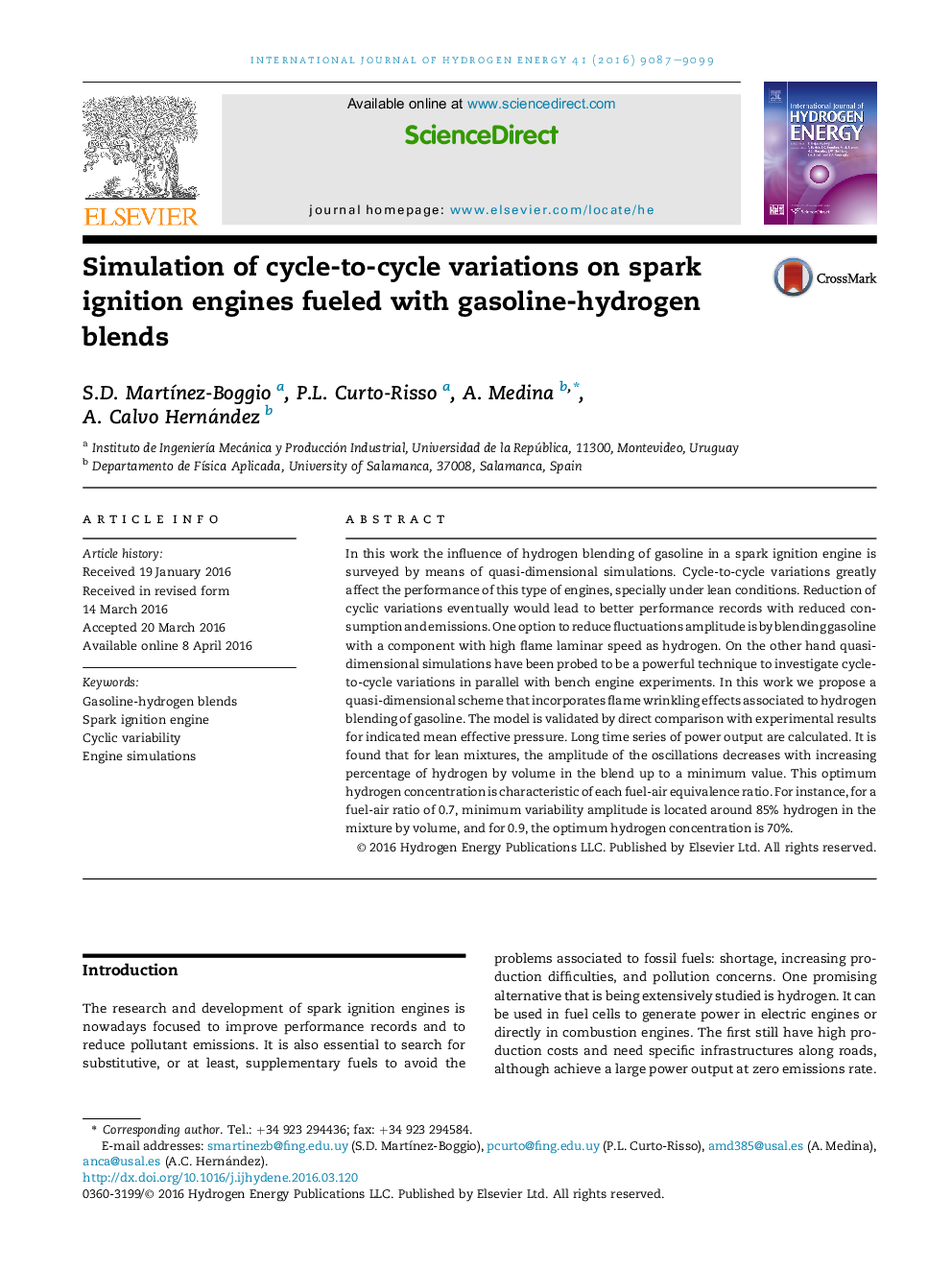| کد مقاله | کد نشریه | سال انتشار | مقاله انگلیسی | نسخه تمام متن |
|---|---|---|---|---|
| 1269923 | 1497404 | 2016 | 13 صفحه PDF | دانلود رایگان |
• An spark ignition engine fueled with gasoline-hydrogen blends is investigated.
• A quasi-dimensional simulation scheme is developed.
• Flame wrinkling effects associated to hydrogen addition are incorporated.
• Cycle-to-cycle variability of power output time series is analyzed.
• For each fuel-air ratio there is a hydrogen concentration minimizing variability.
In this work the influence of hydrogen blending of gasoline in a spark ignition engine is surveyed by means of quasi-dimensional simulations. Cycle-to-cycle variations greatly affect the performance of this type of engines, specially under lean conditions. Reduction of cyclic variations eventually would lead to better performance records with reduced consumption and emissions. One option to reduce fluctuations amplitude is by blending gasoline with a component with high flame laminar speed as hydrogen. On the other hand quasi-dimensional simulations have been probed to be a powerful technique to investigate cycle-to-cycle variations in parallel with bench engine experiments. In this work we propose a quasi-dimensional scheme that incorporates flame wrinkling effects associated to hydrogen blending of gasoline. The model is validated by direct comparison with experimental results for indicated mean effective pressure. Long time series of power output are calculated. It is found that for lean mixtures, the amplitude of the oscillations decreases with increasing percentage of hydrogen by volume in the blend up to a minimum value. This optimum hydrogen concentration is characteristic of each fuel-air equivalence ratio. For instance, for a fuel-air ratio of 0.7, minimum variability amplitude is located around 85% hydrogen in the mixture by volume, and for 0.9, the optimum hydrogen concentration is 70%.
Journal: International Journal of Hydrogen Energy - Volume 41, Issue 21, 8 June 2016, Pages 9087–9099
